Diving - The adventure continues!
2022 Diving - Further UK diving
More UK Diving - Portland & Wraysbury
A couple of weeks later, we were back at Portland with a full RHIB to dive the British Inventor wreck.
This lies on 'The Shambles' a sandbank that has claimed many ships over the years.
I've had good and bad dives on the British Inventor, the last one, with Ria, being notable mainly for terrible vis.
Ironically, it was Ria (and her husband's) lack of recent dives that led us to this site, rather than the Elena R, which was considered too deep for a first dive of the season, but she wasn't looking forward to it.
Fortunately, conditions were better (if not the best I've seen) on this trip and she came up from her dive with Dawn having enjoyed it (maybe it was diving with me that had ruined it before?).
I dived with Andy and Julian (there were 7 of us in total, Paul H and Rohit making up the party) and we enjoyed swim around the plates that are really all that's left of the British Inventor after extensive salvage. There is always lots of life on the wreck, though, with large shoals of Bass and other fish, plus lots of Congers, crabs and Lobsters as well as smaller, reef fish like Wrasse and Blennies.
Video from the British Inventor
It was an enjoyable dive and we toured back into Castleton for air and lunch.
Paul and Julian had found a different drift dive location, close to Weymouth, heading towards Lulworth and Durdle Dor, so we motored out to that after lunch.
White Nothe features a mixture of rock ridges and sand, with, in places, lots of kelp, going down to about 15M.
The highlight, near the end of the dive, was a feisty Cuttlefish, with its tentacles up in a display of aggression.
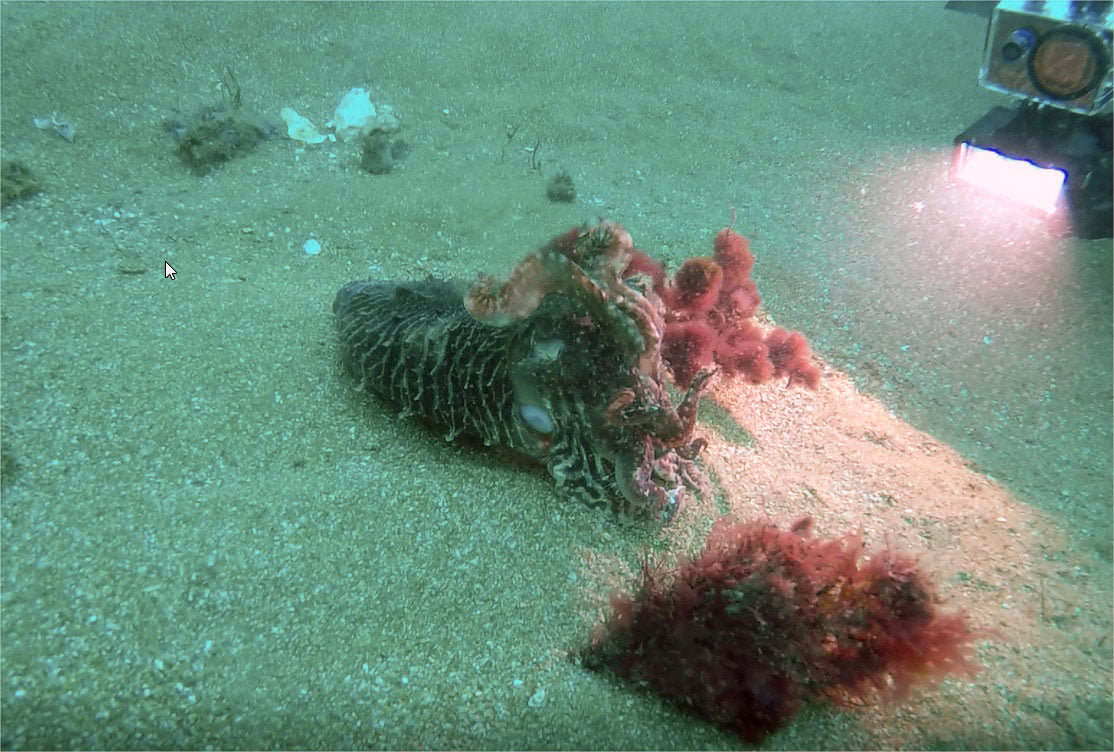
Feisty Cuttlefish
Some of us, me included, enjoyed the dive, for the life and varied seabed landscape, but others found it a dull, extremely gentle, drift dive.
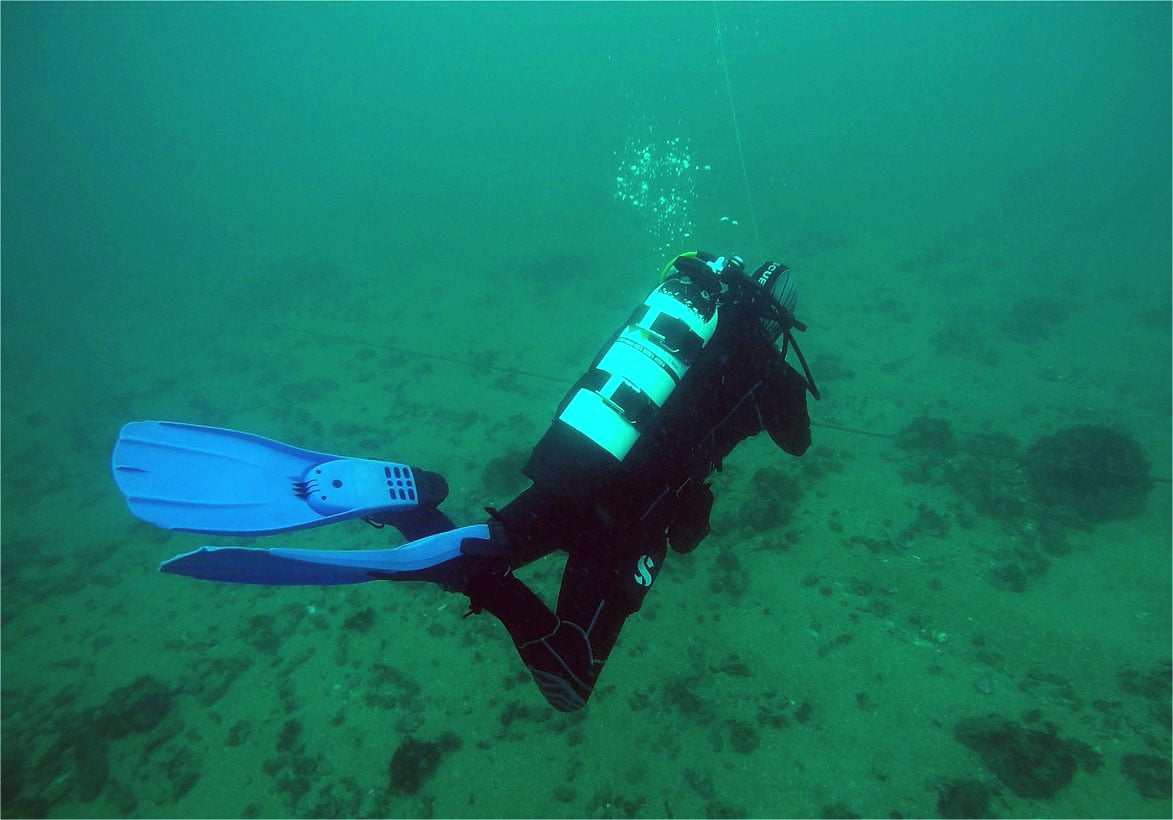
Great vis on drift dive
Everyone agreed, though, that the light and vis made it a gentle dive, very suitable to a second dive or for new divers.
Wraysbury - Training for Portsmouth University
A few days later, Julian texted me to ask if I'd be free to help with training a group of Sports Diver students from Portsmouth University BSAC club. Apparently, they were finding it hard to get some of the required Sports Diver drills completed and had requested help from BSAC region.
As work was quiet, I agreed and tagged along to help as a 'diver in need of rescue' and/or an extra pair of eyes.
5 instructors from our club and another were joined by 8 Students.
A lot of what the students needed to complete was rescue training, some done on Resuci-Annies and training AEDs, but after a while we headed to the water to carry out some CBLs with a group of 3 students.
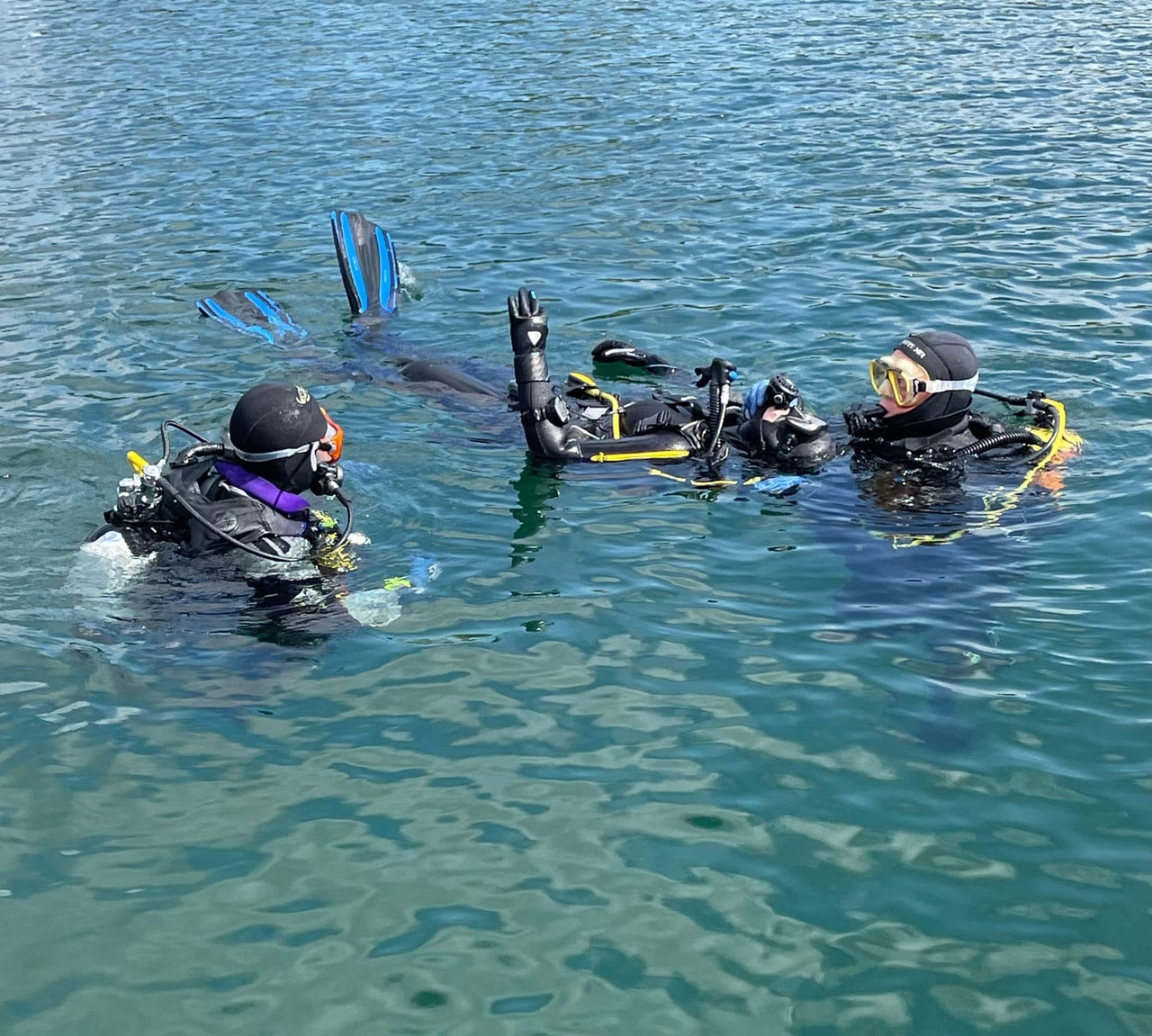
Rescue Training with UPSAC
With that completed, we had a quick tour of the lake before returning to the shore and a break.
For the second dive, I joined Dawn with a couple of students to complete Line Laying exercises.
We ended up doing the exercises around the bus, which was actually a pretty reasonable location, with good vis, although it did get a bit stirred up by 4 divers going around it.
Line Laying and Pike
We then went out into the lake for a short dive, passing a resting Pike just off the bus and finally finding the pit, but this time the vis in it was absolute zero.
Luckily we all found each other when we came back out and had recorded 16M dives.
The students were great, exhibiting good buoyancy, paying attention and demonstrating good skills.
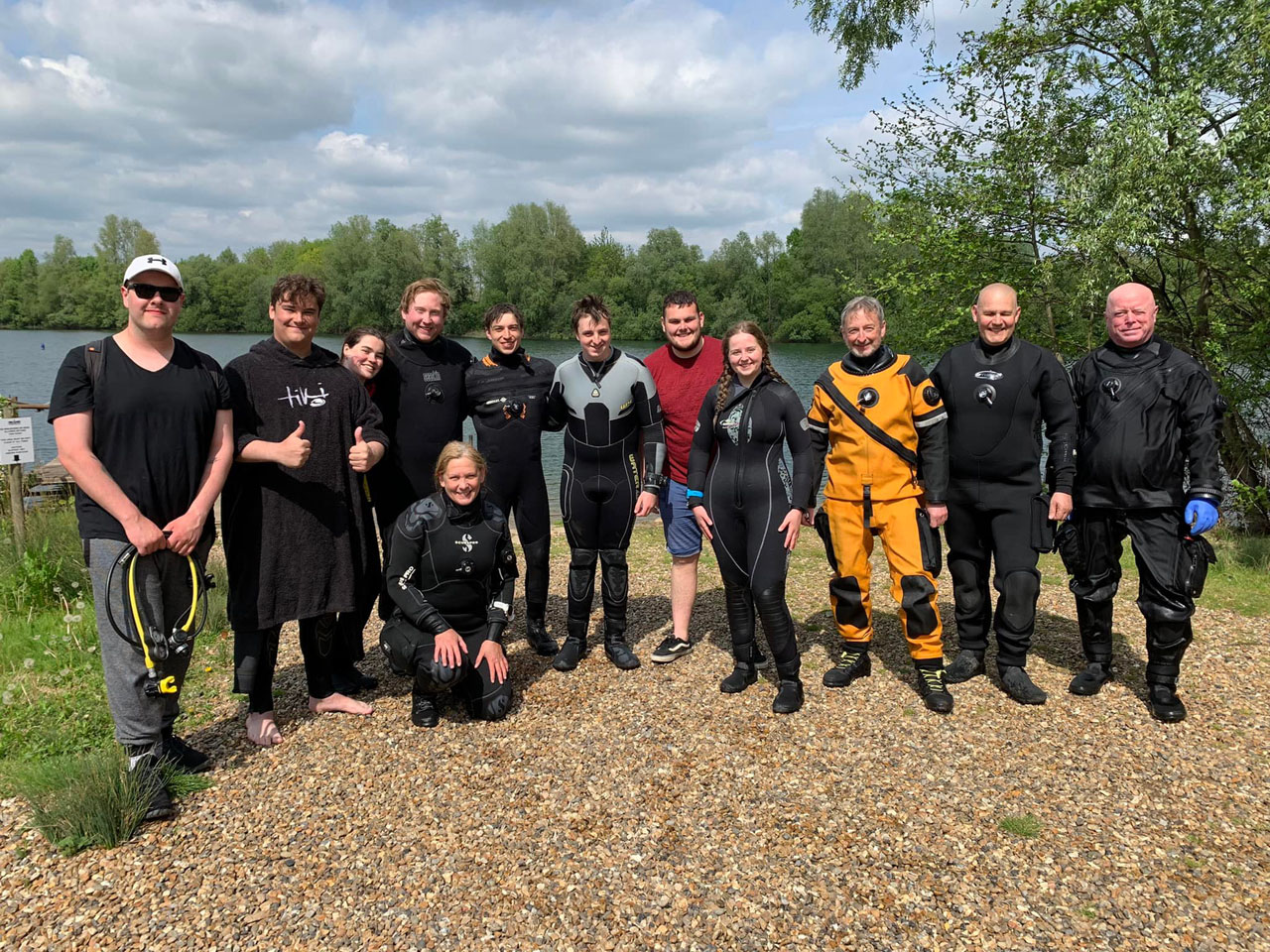
Happy UPSAC students (and instructors) having completed a successful day
One of the students on the second dive was absolutely rock solid on his safety stop, even without any reference points, but everyone exhibited good buoyancy control and seemed genuinely pleased to have got some more lessons towards their Sports Diver qualifications signed off.
When we left, it was suggested that another day may be planned to complete some more.
Elena R and White Nothe
A couple of days later we were all up by 4:30AM to make the trip down to Portland in time for an 8:30 ropes off.
It was hard getting up that early, but once out of the house, it felt quite virtuous to be making so much of a day and, as Andy was driving, it wasn't a lonely drive down.
It was just Paul, Dawn, Julian, Andy and I for this trip, with the aim of diving the Elena R, a wreck we'd enjoyed on our one visit the previous year.
When we arrived, there was a hard boat on site and, although he offered us the use of his shotline, we put our own in as we suspected he would be gone by the time our second wave was ready to dive.
As we readied to go, some divers from the hard boat resurfaced complain of a strong current. Andy, Paul and I dived as a 3 and went in first, but found no current at all, so we're all a bit baffled by the other divers' concern.
The annual plankton bloom had been apparent the previous week, but it made the Elena R a very dark place to be.
The bloom made it a murkier, darker visit than our last one to the Elena R, but it was still good to explore it again.
Aside from the 'snot' in the water, the actual vis was fairly decent, but it had been much lighter when we'd dived it the previous time.
On the positive side, the shot lay right alongside the twin boilers, so, unlike our first visit, there was no hunting around to find them.
We found the usual selection of Congers, Lobsters and Spider crabs, plus big shoals of fish and the usual smaller Blennies and the like.
Diving with single cylinders and ponys for redundancy, we racked up a small deco penalty, but most, if not all, had gone by the time we reached the safety stop.
I wouldn't say it was a great dive, but it's certainly an interesting wreck.
After an early stop in Castletown for air and food, we decided to visit White Nothe again, but a problem with the fuel on the boat meant we were delayed in getting there.
Problem resolved, we got out and Andy, Paul and I dropped in for another 45+ minute dive.
Andy had expressed a hope of seeing Dogfish and we saw a few on the dive, both resting and swimming.
The highlight for me, though, was seeing a large ray (A Thornback, I think).
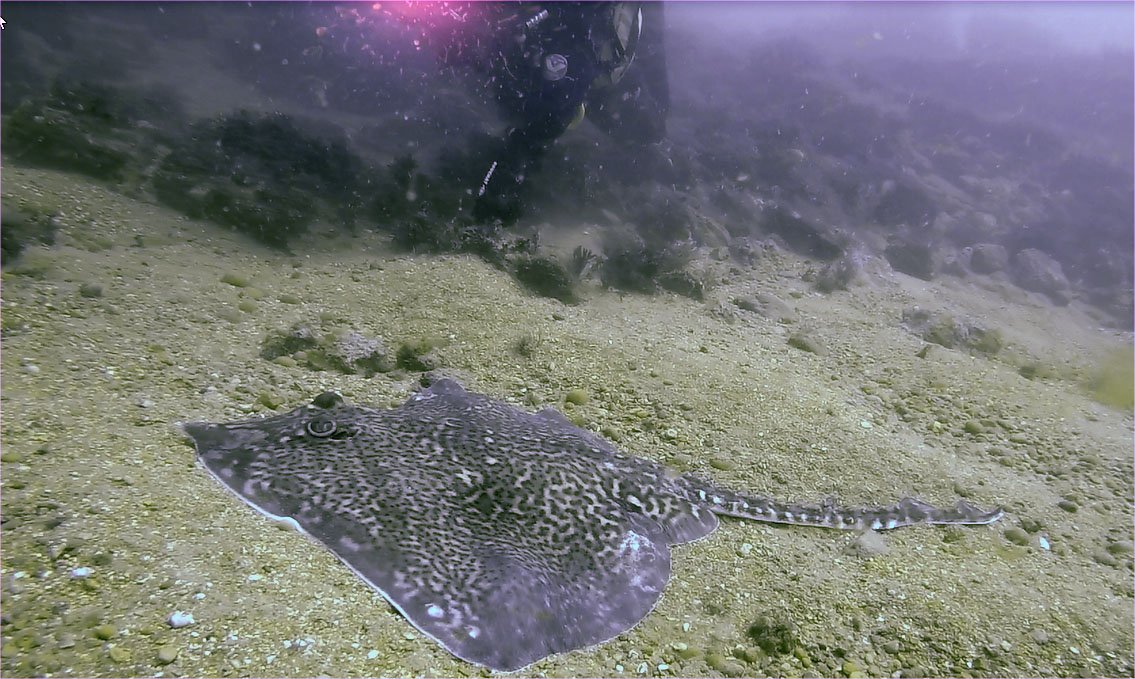
Thornback Ray resting
We came across it resting on the seabed first of all, but when we left it, it swam away. I followed it for a while to get some video of it it swimming as well as at rest.
Drift Dive at White Nothe - Dogfish and Ray
Andy found what looked like a Scorpion Fish, too, but I suspect it was a Gurnard. Either way, it was a good spot of an unusual fish, although it proved hard to get decent video footage of.
It had been another enjoyable dive on this site, close to Portland, but it was a long, long day and I'm not sure I'd be keen to set off so early again, not getting home until around 8PM. I was glad to have shared the journey with Andy (especially as he drove!).
Theory Instructor Exam
Having done a lot of revision for the Advanced Diver exam, I'd decided to take the Theory Instructor Exam too, figuring I'd never be better prepared for it.
I was pretty sure I'd not done that well on the Exam (there's a presentation element too, which I was happy with, but you never really know), so I was really pleased to find I'd only got 2 questions (out of 60) wrong and earned a Merit pass for both elements.
Whether I'll ever complete the Practical Instructor Exam and become a full Open Water Instructor is still not clear in my mind, but I'm one step closer.
Wraysbury
Right at the end of May, Dave Price and I took in a mid-week dive in Wraysbury.
He wanted to check that he was comfortable diving after a shoulder injury and I wanted to see if the Chinese underwater housing I'd bought to replace the Canon one that had developed an impossible to rectify leak in Cyprus was watertight.
It was a bit overcast and we had a couple of heavy showers throughout the day, but it was quiet there.
For our first dive, we entered from the slip away from the shop and swam across the lake, finding the lifeboat.
Sadly we found the vis was patchy, even very poor in places.
I went to enter the lifeboat and found a large Pike hanging mid-water inside - We both took a look, but decided not to disturb the fish.
We swam on and found the aircraft cockpit and then swam around a bit, surfacing a little way out from the slip we'd entered from.
After dodging a shower, getting our cylinders filled and having a cup of tea and something to eat, we set off for a second dive.
For this one, we went in behind the shop, touring the bus and then, seeing the pipe leading to it, going to the pit.
The visibility here was pretty awful and got worse as we descended. As I touched the bottom, it was if someone had turned off the lights in a sealed room, total blackout!
We ascended, though, and refound each other and headed north, in poor vis, getting worse, oddly, with depth across the whole lake.
We finally found the Portakabin and the boat, where I had a sudden bouyancy issue, taking a while to get back under control.
We continued on at around 8M, where the vis was better, if not great, passing a number of sites and then ended up by the London taxi and a boat I didn't recognise in shallow water near the slip in the car park.
We exited there and packed up for the day.
Dave professed himself happy with his shoulder and the Meikon dive housing (Aside from lacking the Canon name and having a better looking and feeling catch, it seemed identical, design and quality-wise, to the Canon housing, making me suspect that they were made by the same people, but Canon stopped making theirs when they bought out the next camera model!) was dry inside, so I was ready to try the camera in it.
The "James Fennel Incident"
The following weekend was the Platinum Jubilee weekend and 5 of us (4 diving, Julian decided to just cox the boat) set off to dive the James Fennel from the club RHIB.
It started with a problem as, when pumping up a flat tyre on the trailer, the valve pulled out of the tyre! George, the ever helpful chap who runs the boatyard, found us a disused spare wheel that fitted and we were able to get the boat launched.
The James Fennel wreck lies on the West side of Portland Bill almost back to Chesil Beach, so it took a while to get around the Bill in slightly choppy water, but we were on site in plenty of time and get the shot in.
There were a couple of other boats there and as both already had divers in, we dropped in.
I dived with Ollie on this dive, while Dawn was diving with Lewis. Neither Ollie or Lewis had dived for a while.
The plan was to dive here and then return to Castletown and do a drift on White Nothe in the afternoon.
The shot was right on the wreck and we dropped down beside the engine and one of the boilers (I'm pretty sure there are two from previous dives).
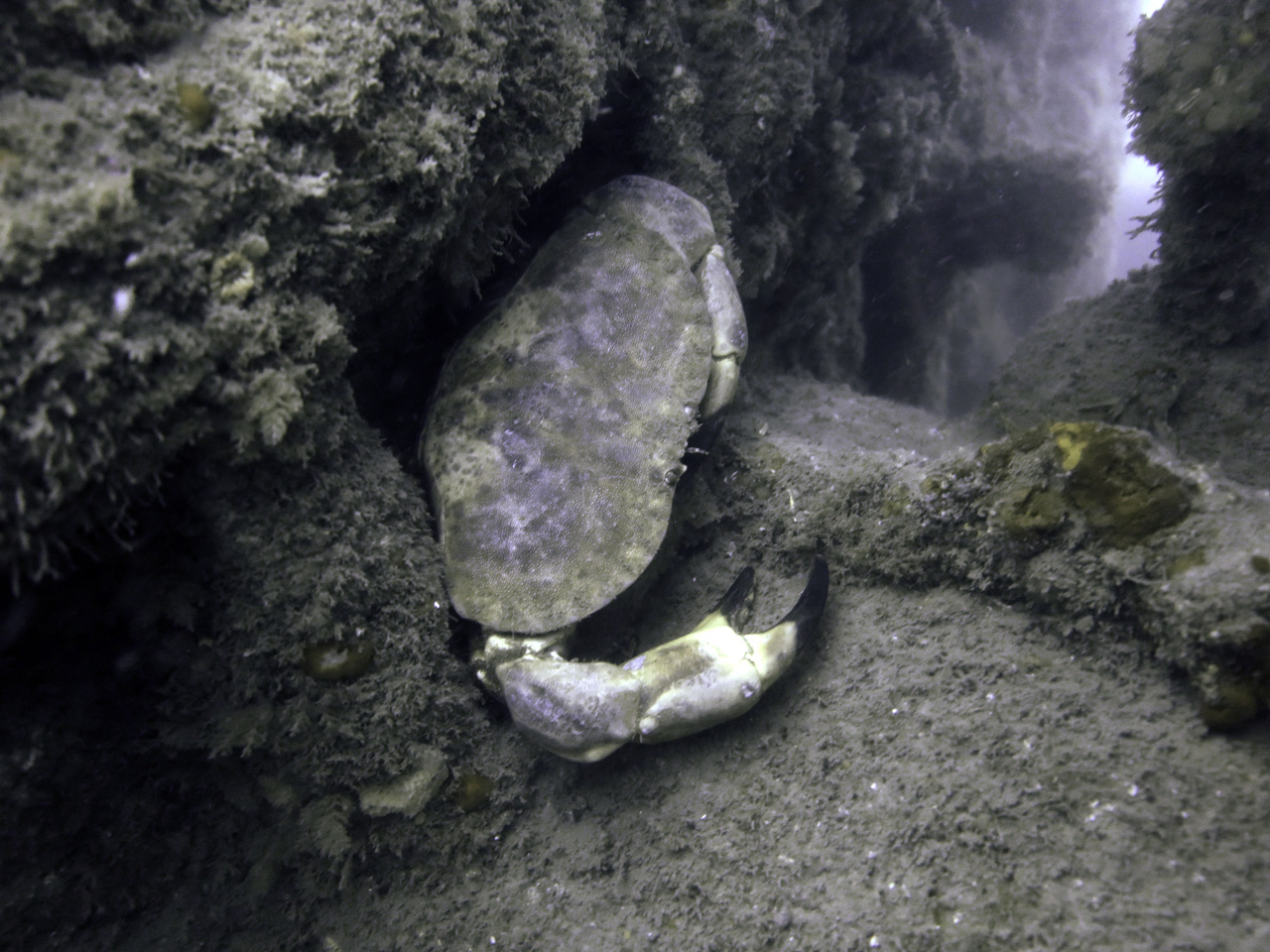
Large Crab in the engine
We looked around a little and then, remembering there was more forward of the boiler, I set off in that direction, planning to return to turn around at the bow and swim back through the wreck to the stern.
To my surprise, we didn't find anything forward of the boiler, so after a few minutes, I indicated to Ollie to turn around.
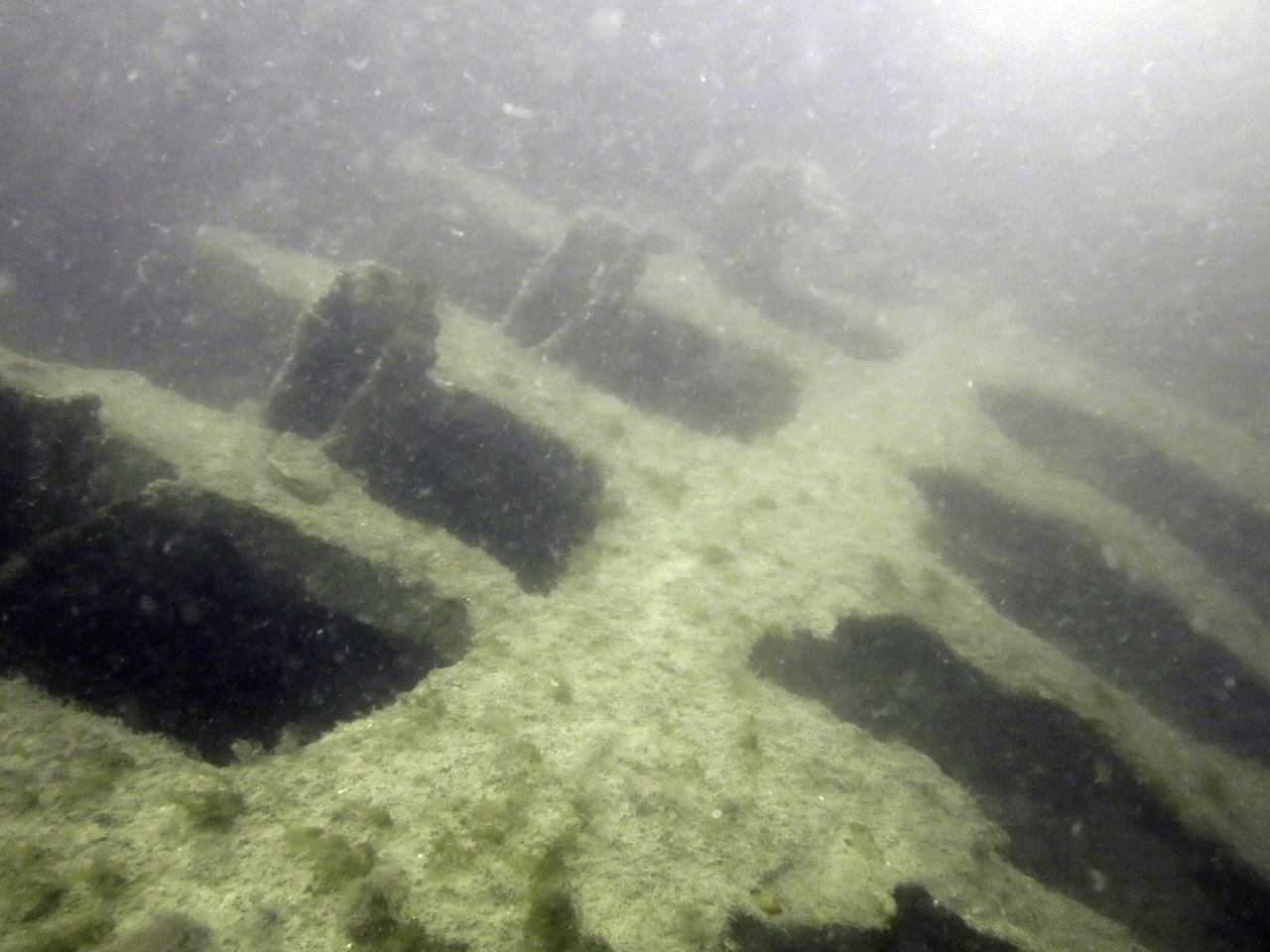
Hull ribs
As we started to swim back, there was no wreck!
Presumably, there was a imperceptible cross current that had pushed us away from the wreck and we ended up swimming parallel to it!
We carried on the dive, hoping to relocate the wreck, but we never did.
We did encounter many of the huge lumps of Portland stone that litter the sea bed here, some as big as a small house!
Our good deed for the day was done, too, as we rescued a Wrasse trapped in a Lobster pot.
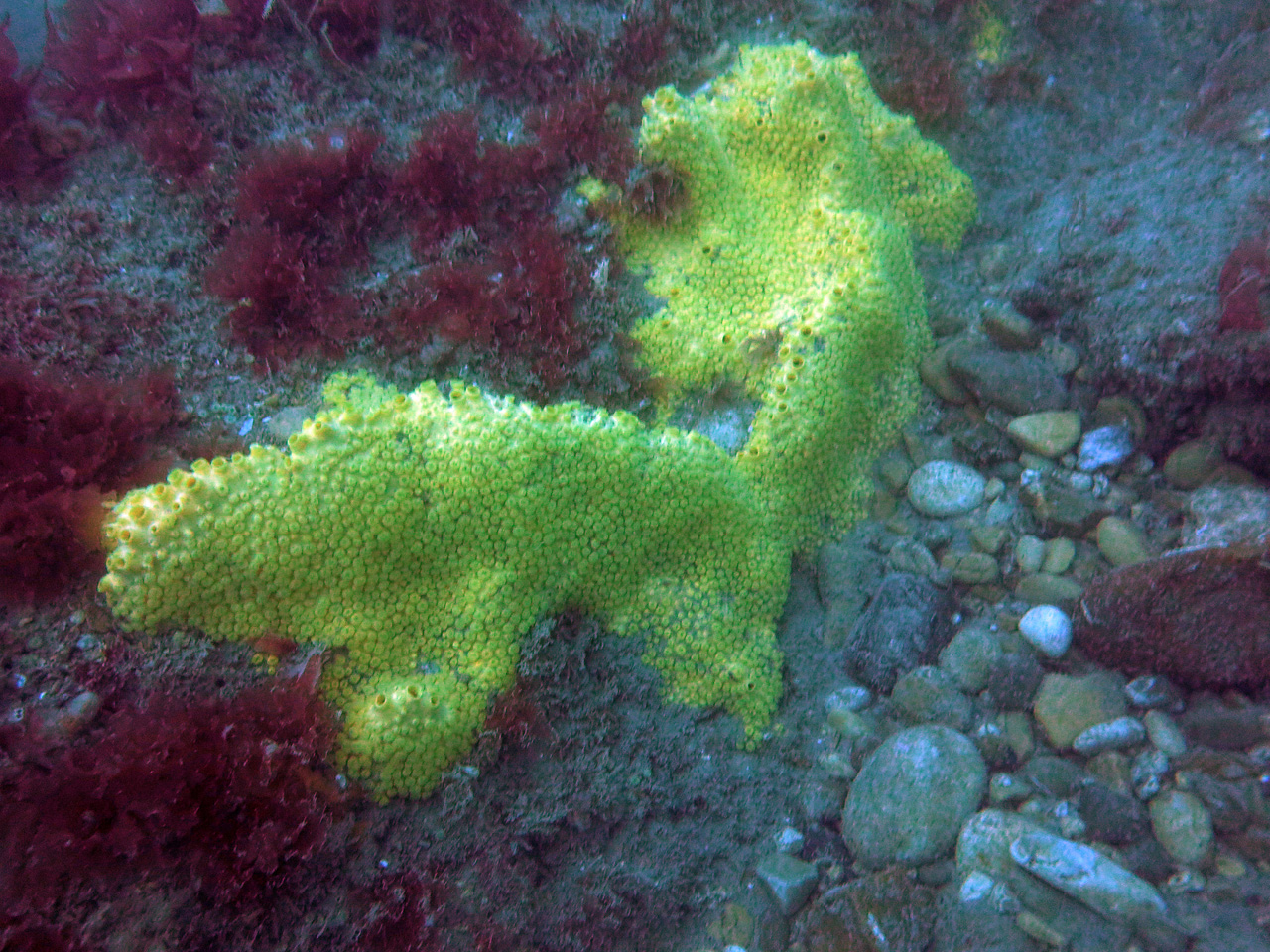
Colourful sponge
After 35 minutes, as planned, I deployed my DSMB and we surfaced, but (as I'd found at Wraysbury) I had great trouble maintaining my buoyancy on the stop. Combined with getting my camera wrapped around my second stage hose, this led to me using a lot of air on the stop, but we managed the stop and surfaced safely.
As the boat came alongside, Dawn leaned down and told me the engine had failed and we were running on the small Auxillary motor.
Once back on the boat, we tried a few things to restart the main engine with no success, so start the slow journey back to Ferrybridge on the auxillary motor.
This gave us about 3.5Kts, rather than the 20+ we would expect from the main engine and it wasn't drawing fuel from the main tank, so we had to top it up with a Jerry Can a number of times (luckily Julian had had a last minute change of heart about taking it!). It took us 2.5 hours to get back, in contrast to the 35 minutes it had taken us to reach the site!
Needless to say, there was no chance of a second dive and we left fairly early in a somewhat dispirited mood.
The next day a boat mechanic took a look and diagnosed a potential short to the High Pressure fuel pump, which had blown a fuse. With this fixed, he had succeeded in getting the motor running, so the next step is to take the boat out for another test run.
On the positive side, my camera housing was fine and I got a few photos (as you can see!)


